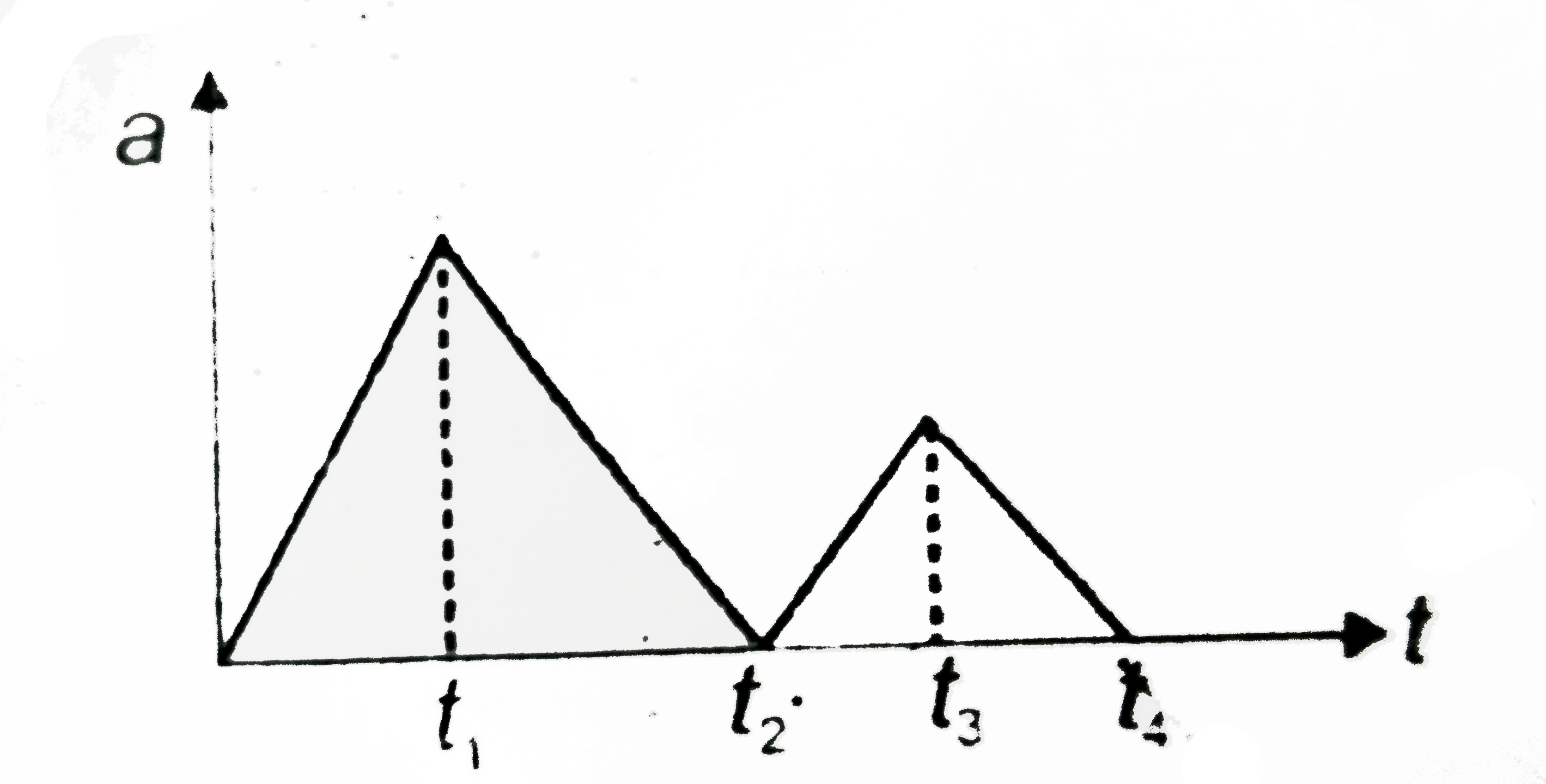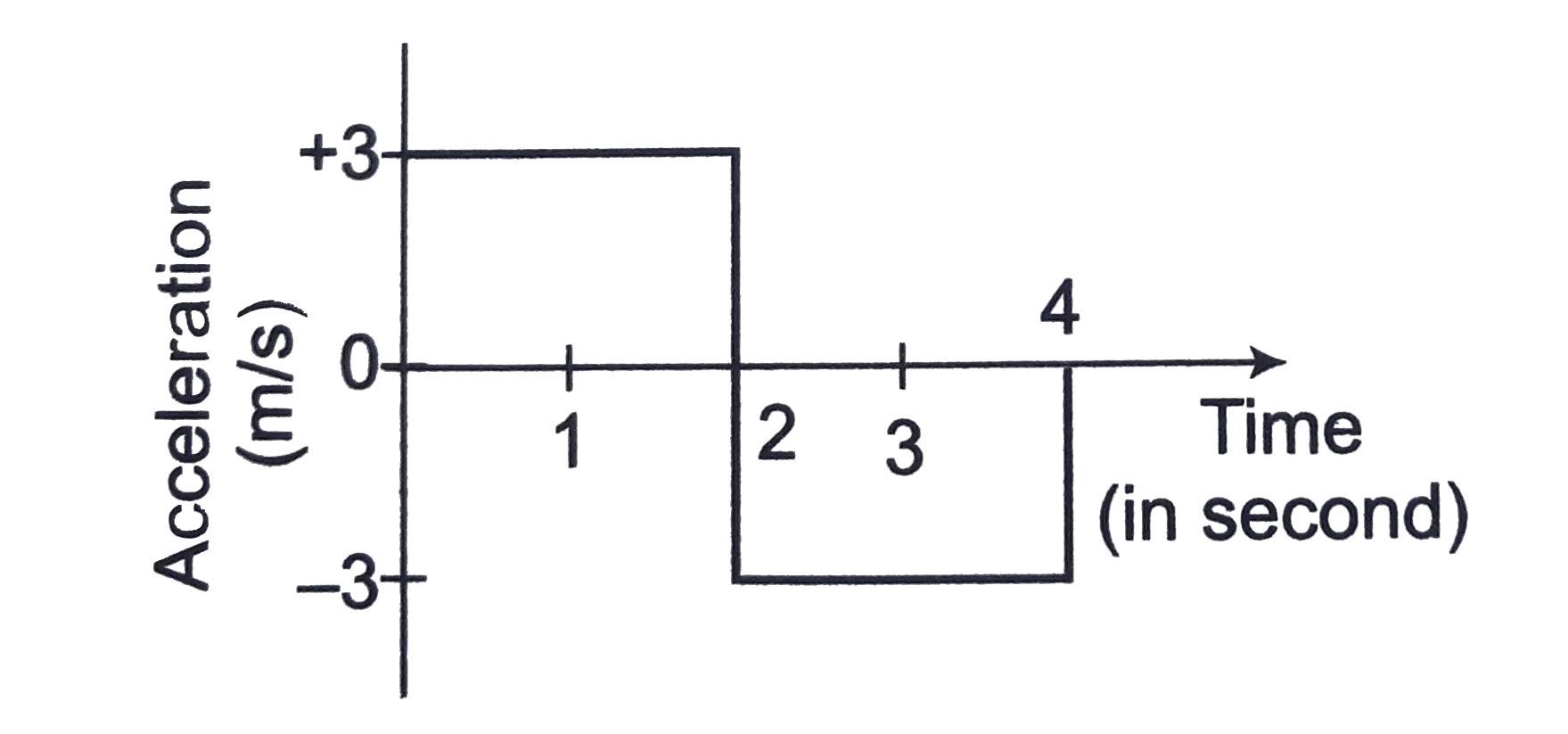A point mass starts moving in a straight line with constant acceleration. After time t0 the acceleration changes its sign, remaining the same in magnitude. Determine the time T from the beginning of motion in which the point mass returns to the initial position.
The correct Answer is:A, C, D
To solve the problem, we need to analyze the motion of the point mass in two phases:
1. The first phase where it moves with constant acceleration a for a time t0.
2. The second phase where the acceleration changes to −a (the same magnitude but opposite direction).
Step 1: Calculate the distance traveled in the first phase.
The distance s1 traveled during the first phase can be calculated using the equation of motion:
s1=ut+12at2
Since the initial velocity u=0 (the point mass starts from rest), we have:
s1=0+12at20=12at20
Step 2: Calculate the velocity at the end of the first phase.
The final velocity v at the end of the first phase can be calculated using:
v=u+at
Again, since u=0:
v=0+at0=at0
Step 3: Analyze the second phase of motion.
In the second phase, the point mass starts with an initial velocity v=at0 and moves with an acceleration of −a. We need to find the time t it takes to return to the initial position.
The distance traveled in the second phase s2 can be calculated as:
s2=vt+12(−a)t2
Substituting v=at0:
s2=(at0)t−12at2
Step 4: Set the total distance equal to zero.
For the point mass to return to the initial position, the total distance traveled must equal the distance traveled in the first phase (but in the opposite direction):
s1+s2=0
Substituting s1=12at20 and s2:
12at20+(at0)t−12at2=0
Step 5: Simplify the equation.
Factoring out a (assuming a≠0):
12t20+tt0−12t2=0
Multiplying through by 2 to eliminate the fraction:
t20+2tt0−t2=0
Step 6: Rearranging the equation.
Rearranging gives us:
t2−2tt0−t20=0
Step 7: Solve the quadratic equation.
Using the quadratic formula t=−b±√b2−4ac2a:
Here, a=1, b=−2t0, and c=−t20:
t=2t0±√(−2t0)2−4(1)(−t20)2(1)
t=2t0±√4t20+4t202
t=2t0±√8t202
t=2t0±2√2t02
t=t0(1±√2)
Since time cannot be negative, we take:
t=t0(1+√2)
Step 8: Calculate the total time T.
The total time T from the beginning of the motion is:
T=t0+t=t0+t0(1+√2)=t0(2+√2)
Final Result:
The total time T from the beginning of motion in which the point mass returns to the initial position is:
T=t0(2+√2)
2. The second phase where the acceleration changes to −a (the same magnitude but opposite direction).
Topper's Solved these Questions
- BOOK - DC PANDEY ENGLISHCHAPTER - KINEMATICSEXERCISE - More Than One Correct6videos
KINEMATICS
- BOOK - DC PANDEY ENGLISHCHAPTER - KINEMATICSEXERCISE - Comprehension7videos
KINEMATICS
- BOOK - DC PANDEY ENGLISHCHAPTER - KINEMATICSEXERCISE - Objective45videos
KINEMATICS
- BOOK - DC PANDEY ENGLISHCHAPTER - GRAVITATIONEXERCISE - (C) Chapter Exercises45videos
GRAVITATION
- BOOK - DC PANDEY ENGLISHCHAPTER - KINEMATICS 1EXERCISE - INTEGER_TYPE15videos
KINEMATICS 1
Similar Questions
A point mass starts moving in straight line with constant acceleration a from rest at t=0. At time t=2s, the acceleration changes the sign remaining the same in magnitude. The mass returns to the initial position at time t=t0 after start of motion. Here t0 is
View SolutionAverage velocity of a particle moving in a straight line, with constant acceleration a and initial velocity u in first t seconds is.
View SolutionAverage velocity of a particle moving in a straight line, with constant acceleration a and initial velocity u in first t seconds is.
View SolutionA body moving in a straight line with constant acceleration covers distances a and b in successive equal time interval of t. The acceleration of the body is
View SolutionA particle of mass 2kg starts moving in a straight line with an initial velocity of 2m/s at a constant acceleration of 2m/s2. Then rate of change of kinetic energy.
View SolutionA particle moves in a straight line and its position x at time t is given by x2=2+t. Its acceleration is given by :-
View SolutionA particle starts moving from rest on a straight line. Its acceleration a verses time t is shown in the figure. The speed of the particle is maximum at the instant
 View Solution
View SolutionA particle starts from rest at t=0 and moves in a straight line with an acceleration as shown below. The velocity of the particle at t=3 s is
 View Solution
View SolutionA particle of mass m is moving along the line y-b with constant acceleration a. The areal velocity of the position vector of the particle at time t is (u=0)
View SolutionA body starts with initial velocity u and moves with uniform accelelration . When the velocity has increased to 5u, the acceleration is reversed in direction, the magnitude remaining constant. Find its velocity when it returns to the strating point?
View Solution

